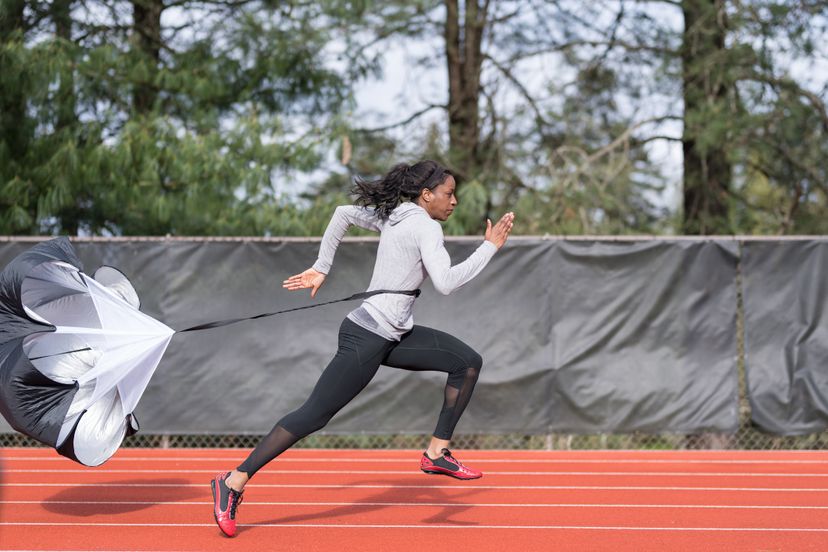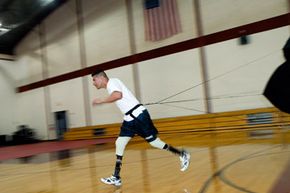
Plummeting from an airplane at 10,000 feet isn't the only time a parachute comes in handy. In fact, your local track may actually be an ideal venue. Running or speed parachutes are gaining popularity with a host of athletes.
The nylon parachutes attach to a harness around your waist or your chest and then expand as you speed up. As the chute expands, it creates drag, forcing you to work harder which, in turn, builds overall strength. Runners using parachutes create wind resistance even on a day when it isn't windy at all.
Advertisement
Many elite and amateur athletes have comprehensive strength-building programs, which require ample time in the weight room. With parachutes, you build strength while running. They combine resistance training and interval training in a single workout. For die-hard runners, building strength without giving up a running day has added appeal.
Wind resistance training builds strength in key large-muscle groups, increasing race-day or game-day performance. While using these speed chutes exclusively isn't recommended by elite coaches or athletes, parachute training is an excellent addition to your training repertoire. They help you get the most bang for your workout buck.
Sprinters and other athletes seeking to develop explosive speed are the most natural beneficiaries of training with parachutes. However, middle- and long-distance runners can also benefit from the quickness, agility and speed developed by incorporating parachute running and other resistance work into a broader strength training program.
Speed chutes also afford runners a psychological edge. It's this extra mental resilience that shows when other runners tire out. When the winds gust against you while attacking the last big hill of the race, it's wind-resistance training like this that provides an extra edge.
Advertisement















